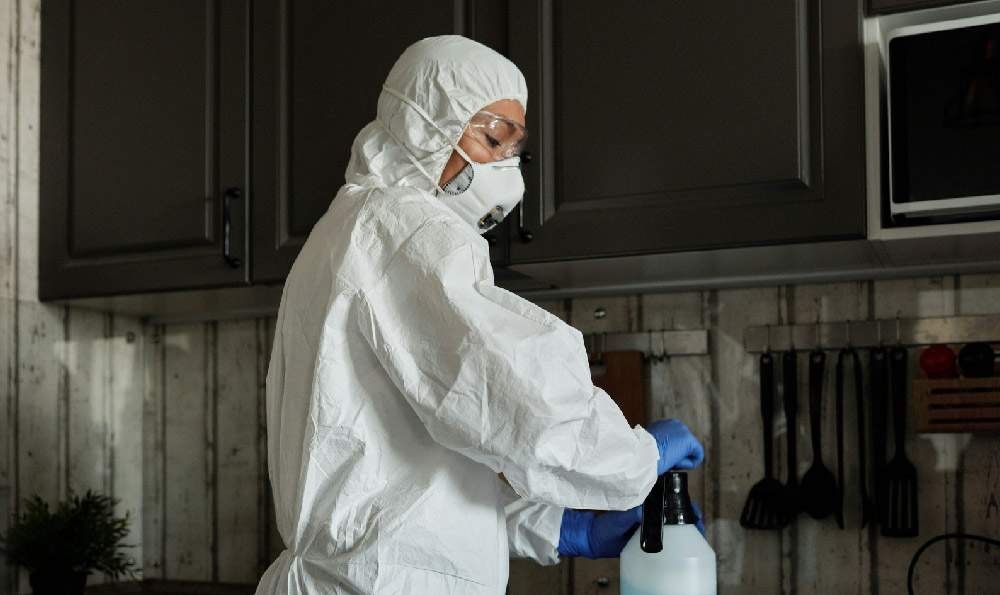兰州无甲醛消声管道是一种环保隔音材料,它的出现对于解决甲醛污染和噪声问题有着重要的意义。在当前环境污染和噪声污染日益严重的情况下,选择一种无甲醛的消声管道材料是非常关键的。本文将介绍一些常见的环保隔音材料,以及它们与兰州无甲醛消声管道的比较和优势所在。
第一种环保隔音材料:橡胶隔音材料。橡胶隔音材料具有良好的隔音效果,能够有效地吸收噪音和减少振动传导。与兰州无甲醛消声管道相比,橡胶隔音材料虽然能够起到一定的隔音作用,但是在甲醛污染方面并不理想。
第二种环保隔音材料:岩棉隔音板。岩棉隔音板是一种常见的隔音材料,它具有较好的隔音效果和吸声性能。岩棉隔音板在应用过程中常常会产生大量的粉尘,对人体健康有一定的危害。相比之下,兰州无甲醛消声管道在保证隔音效果的充分考虑了环保和人体健康的因素。
第三种环保隔音材料:玻纤隔音棉。玻纤隔音棉是一种常用的隔音材料,它具有良好的隔音效果和耐高温性能。玻纤隔音棉在生产过程中会产生大量的粉尘和有害气体,对环境和人体健康有一定的影响。兰州无甲醛消声管道采用的是无甲醛材料,不仅能够保证隔音效果,还能够减少对环境的污染和对人体健康的影响。
第四种环保隔音材料:聚氨酯隔音材料。聚氨酯隔音材料具有良好的隔音效果和耐腐蚀性能,被广泛应用于建筑和工程领域。在选择隔音材料时,还需要考虑到甲醛污染和环保问题。兰州无甲醛消声管道采用的是经过专业技术处理的环保材料,能够有效解决甲醛污染问题,确保室内空气质量和人体健康。
兰州无甲醛消声管道是一种环保隔音材料,它具有无甲醛、环保和隔音效果好的特点。通过与其他常见的环保隔音材料的对比,我们可以看出,兰州无甲醛消声管道在解决甲醛污染和噪声问题方面有着明显的优势。在今后的建筑和工程中,我们应该更加重视环保隔音材料的选择,为人们创造一个更加安静和健康的生活环境。
环保隔音材料有哪些

环保意识的增强使得人们对环境问题越来越关注。随着城市的发展和人口的增加,噪音污染已经成为一个日益严重的问题。为了改善居住和工作环境,环保隔音材料逐渐获得了广泛关注和应用。本文将介绍一些常见的环保隔音材料,以及它们的特点和应用。
第一段 减震橡胶
减震橡胶是一种常见的环保隔音材料,其主要由橡胶制成。它具有良好的弹性和减震效果,可以有效地吸收噪音和振动。减震橡胶广泛应用于建筑物和机械设备的隔音,可以帮助减少噪音对周围环境的影响。
第二段 吸音板
吸音板是一种可以吸收声波的环保隔音材料。它通常由纤维材料制成,如玻璃纤维或岩棉。吸音板的表面通常用特殊处理,以增加对声波的吸收能力。吸音板常用于电影院、会议室和录音棚等场所,可以有效地减少噪音和回声。
第三段 隔音玻璃
隔音玻璃是一种具有隔音效果的环保材料。它的结构通过在玻璃中夹层一层PVB薄膜来实现隔音效果。隔音玻璃可以有效地隔绝外界噪音,使室内环境更加安静。隔音玻璃广泛应用于住宅、办公室和酒店等场所。
第四段 隔音石膏板
隔音石膏板是一种常用的环保隔音材料,由石膏和纤维材料制成。它的结构密度较高,可以有效地隔绝声音的传播。隔音石膏板常用于墙壁和天花板的隔音,可以帮助减少噪音的传递,改善室内环境的舒适度。
第五段 隔音地板
隔音地板是一种可以减少楼上噪音传递的环保材料。它通常由多层结构组成,包括隔音层、隔音板和地板层。隔音地板可以有效地减少脚步声和其他噪音对楼下的影响,提供更加安静和舒适的居住环境。
第六段 隔音窗帘
隔音窗帘是一种可以隔绝外界噪音的环保材料。它通常由多层结构组成,包括隔音层、隔音布和窗帘层。隔音窗帘具有良好的隔音效果,可以减少噪音对室内的干扰,提供更加宁静的休息环境。
第七段 隔音隔墙
隔音隔墙是一种可以隔离声音传播的环保材料。它通常由多层结构组成,包括隔音板、隔音材料和隔音装饰层。隔音隔墙可以有效地减少声音的传递,提供更加私密和安静的空间。
第八段 隔音板材
隔音板材是一种可以隔绝声音的环保材料。它通常由多层结构组成,包括隔音层、隔音膜和隔音板。隔音板材具有良好的隔音效果,可以减少噪音的传递,提供更加宁静和舒适的环境。
第九段 隔音墙纸
隔音墙纸是一种可以减少声音传播的环保材料。它通常由多层结构组成,包括隔音膜、隔音纸和墙纸层。隔音墙纸具有良好的隔音效果,可以减少噪音对室内的影响,提供更加安静和舒适的生活环境。
结尾
通过本文的介绍,我们可以看到,环保隔音材料在改善居住和工作环境方面起着重要的作用。减震橡胶、吸音板、隔音玻璃、隔音石膏板、隔音地板、隔音窗帘、隔音隔墙、隔音板材和隔音墙纸等材料都有各自的特点和应用范围。在选择合适的环保隔音材料时,我们应该根据具体需求和预算来进行判断和选择。只有合理使用和应用这些环保隔音材料,我们才能创造更加宁静、舒适和环保的生活和工作环境。
地下通风管道
地下通风管道是现代建筑中不可或缺的一部分。它们起着排除室内污浊空气,引入新鲜空气的重要作用。在这篇文章中,我们将探讨地下通风管道的行业发展和应用。

地下通风管道的历史可以追溯到古代。古人通过地下通道将空气引入建筑中,以改善室内环境。这种古老的智慧经过了数百年的发展和改进,逐渐演变成了现代地下通风管道系统。
随着科技的进步,地下通风管道的设计和材料也得到了极大的改良。现代地下通风管道通常由耐候钢和聚乙烯等材料制成,具有优异的耐腐蚀性和耐久性。这些管道可以在各种恶劣环境中使用,如高温、高湿和腐蚀性气体等。
除了材料的改进,地下通风管道的设计也变得更加高效和智能化。现代的通风系统通常采用计算机辅助设计和控制,能够根据室内空气质量和人流量等因素自动调整通风量和风速。这不仅提高了通风效果,还降低了能耗和运行成本。
地下通风管道在建筑中的应用范围也越来越广泛。除了用于住宅和商业建筑,它们还广泛应用于医院、学校、地下停车场等场所。这些地方通常有较高的人流量和特殊的空气要求,地下通风管道可以有效地改善室内空气质量,保证人们的健康和舒适。
地下通风管道行业的发展也带动了相关产品和服务的兴起。有专门的公司和工程师致力于地下通风管道的设计、施工和维护。他们拥有丰富的经验和专业知识,能够为客户提供全方位的解决方案。
作为一个行业从业者,我深深地感受到了地下通风管道的重要性。它们不仅仅是一根根管道,更是保护人们健康的守护者。每当我看到新建筑中的通风管道齐整而巧妙地布置时,我都不禁为这项工程技术的进步而感到骄傲。
地下通风管道在现代建筑中发挥着至关重要的作用。随着科技的进步和行业的发展,它们变得更加高效、智能化和可靠。我们期待着未来地下通风管道行业的进一步发展,为人们创造更加健康舒适的室内环境。
